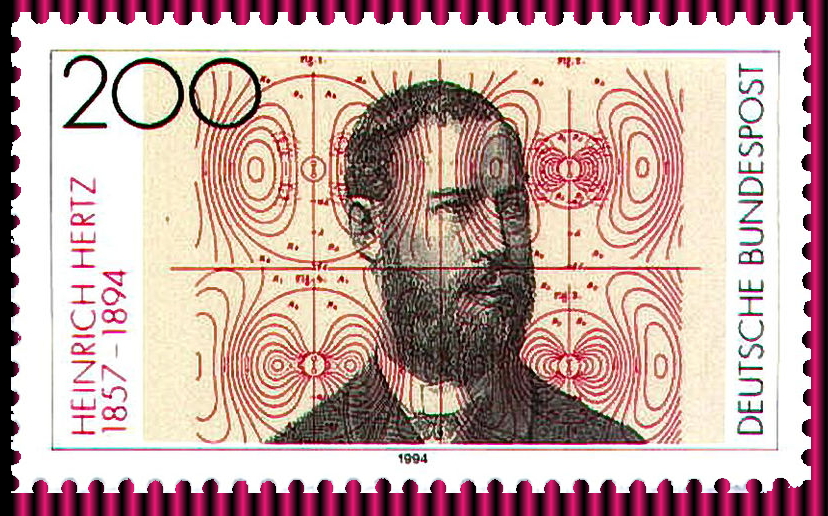Catching the Wave
On February 22, 1857, German physicist Heinrich Rudolf Hertz was born. He was a student and protégé of the great Hermann von Helmholtz. Hertz began his career as a university lecturer and quickly established himself as an accomplished speaker.
In his lab, Hertz demonstrated the existence of electric waves, using engineering instrumentation to transmit and receive their pulses. He showed how he could produce and detect electricity in electromagnetic radiation or Hertzian radiation, the long-wavelength electromagnetic waves soon to be called radio waves. He measured their length and speed. He further demonstrated how they shared properties of reflection and refraction with other forms of energy, revealing that light, electricity, and magnetism were versions of the same wave field phenomenon.

Hertz had discovered what had always been present but had remained invisible to the human eye. He doubted it would have a practical application! An Italian inventor named Guglielmo Marconi saw one. As did physicist and electrical engineer Nikola Tesla. Hertz died young, before his discovery launched the incredible applications of radio, then television, and that continue wirelessly to this day.
In his honour, the hertz or Hz is the Standard International Unit of frequency that is defined by the number of cycles per second of the periodic phenomenon in question. For example, a human might perceive the violin’s A string vibrating at 440 Hz or tune in the FM radio station broadcasting at 96.1 MHz or use a computer whose Central Processing Unit operates at 6 GHz. The hertz is used to describe anything that vibrates whether or not we can hear or see it – from subsonic sound to emissions from pulsars and quasars.
B Bondar / Real World Content Advantage